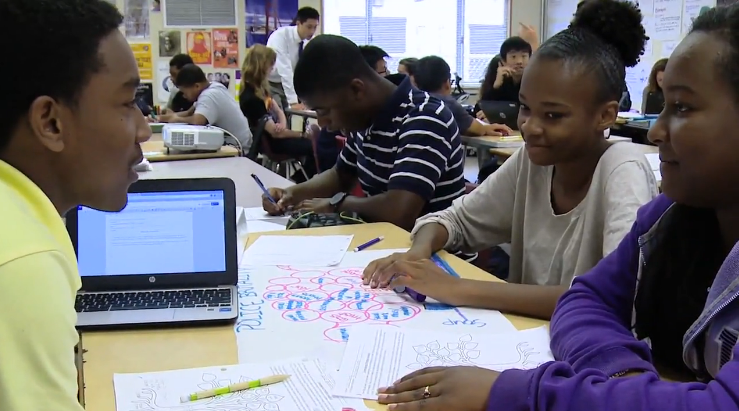Many English language arts and social studies teachers are working to make their curricula more engaging to adolescent learners by including topics that affect the lives of their students. Teenagers often feel passionately about social justice, or issues that directly affects those in their communities.
Teachers in Oakland are working to help young people find ways to take what they are learning and become active agents for change in their community using a program called Educating for Democracy in the Digital Age. The Teaching Channel documented how teachers empower and engage students through a curriculum devoted to not only teaching students about the problems, but giving them tools to begin trying to change them.
"The civic engagement work has given students a sense of agency, a sense of voice, and like a structure to think about 'how can I actually do something with the things that I'm learning,'" said Matt Colley, a ninth grade English and History teacher at Oakland Technical High School.* "And to really see school as a springboard to community engagement, as opposed to a report card grade."
Civic Engagement in the Digital Age from Teaching Channel on Vimeo.
Many of the issues facing Oakland students, like violence or discrimination, are big systemic issues that many people in society have tried to address for a long time. These issues can feel overwhelming, but trying to understand a complex issue with deep historical roots is a good exercise in systems thinking. One assignment asks students to create an infographic that simply, but accurately, conveys the root cause, issue and a theory of change.


